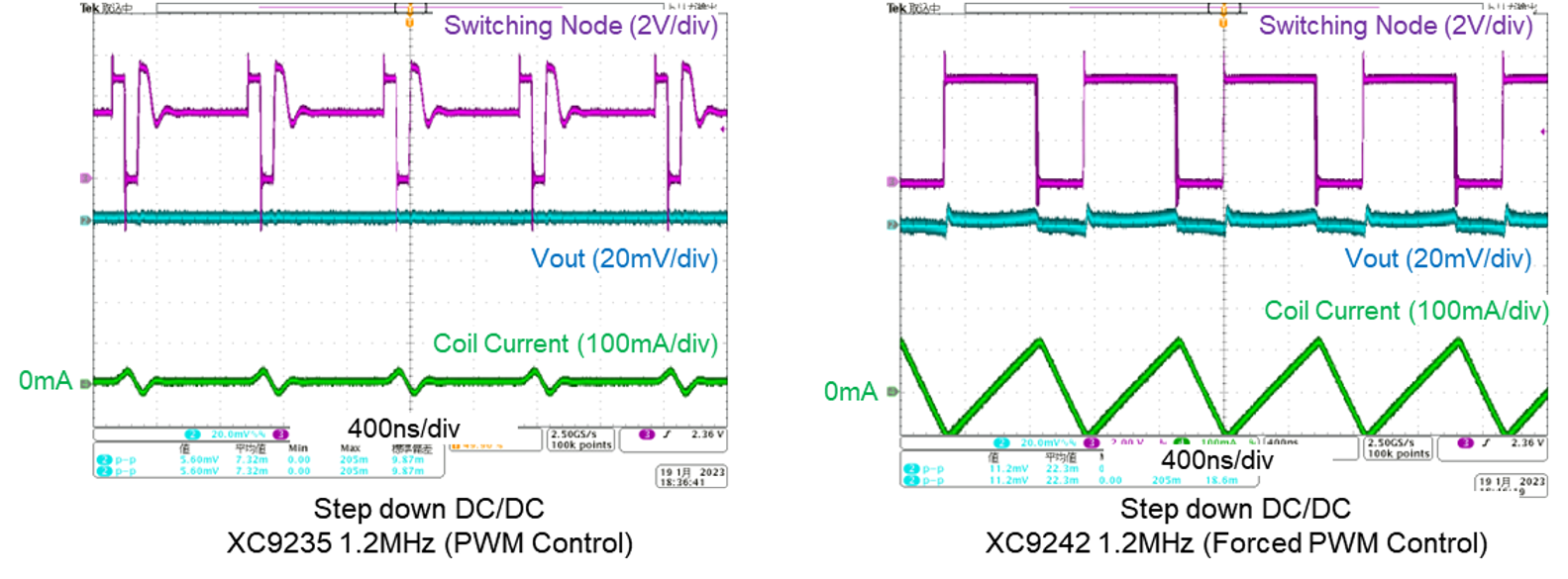In addition to PWM control that prevents reverse flow of the coil current, PWM control that allows reverse flow of the coil current is called forced PWM control.
Condition : Vin=5V, Vout=3.3V/0mA

Unlike PWM control, pulse skip does not occur with forced PWM control even at light load conditions and it is easy to take noise countermeasures.
The characteristics of PMW control and forced PWM control are as follows.
PWM Control
This becomes DCM in light load states, and the duty increases as the output current increases.
In the light load state, the ON duty required to maintain the output voltage becomes very small and may become even lower than the minimum duty that can be controlled by the IC.
Under these conditions, the oscillation frequency cannot be maintained and a pulse skip that lowers the oscillation frequency occurs.
In addition, switching node ringing occurs in DCM. Switching node ringing is a cause of output voltage noise interference and radiation noise.
Forced PWM Control
With forced PWM control, it comes CCM even at light loads to reverse the coil current, so the duty is fixed from light loads to heavy loads.
Unlike regular PWM control, the duty does not become small during light loads, so a pulse skip does not occur during light loads.
Further, it does not become DCM, so switching node ringing does not occur and thus ringing is not a cause of noise.
A disadvantage is that the efficiency at light loads is lower than that of regular PWM control.
Further, with forced PWM control, the coil current must be reversed, so forced PWM control with an asynchronous rectifier type DC/DC that requires and externally attached diode cannot be conducted.